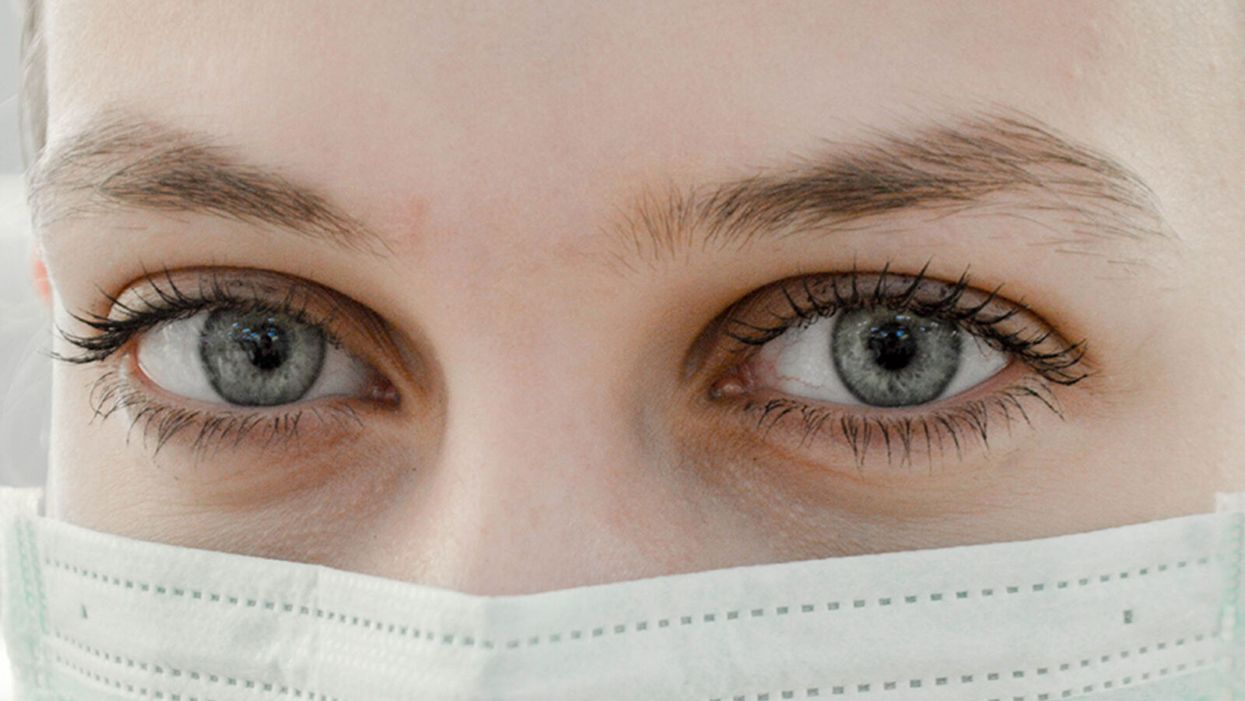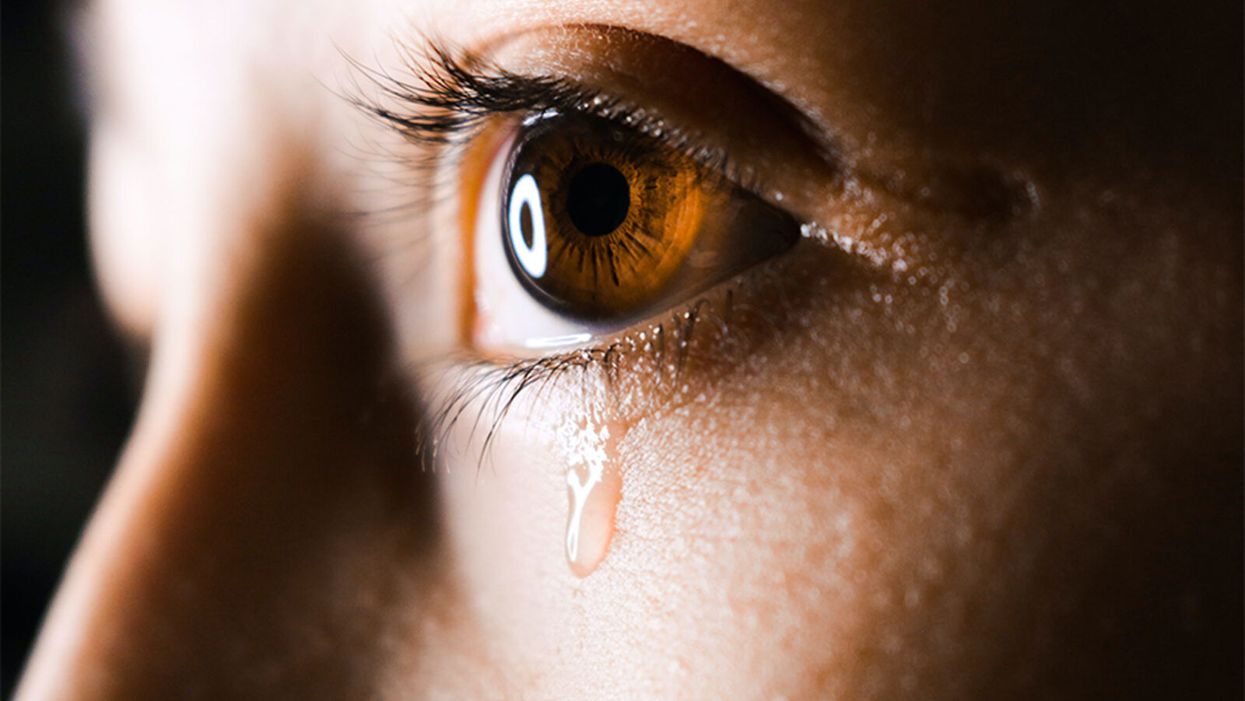Can an “old school” vaccine address global inequities in Covid-19 vaccination?
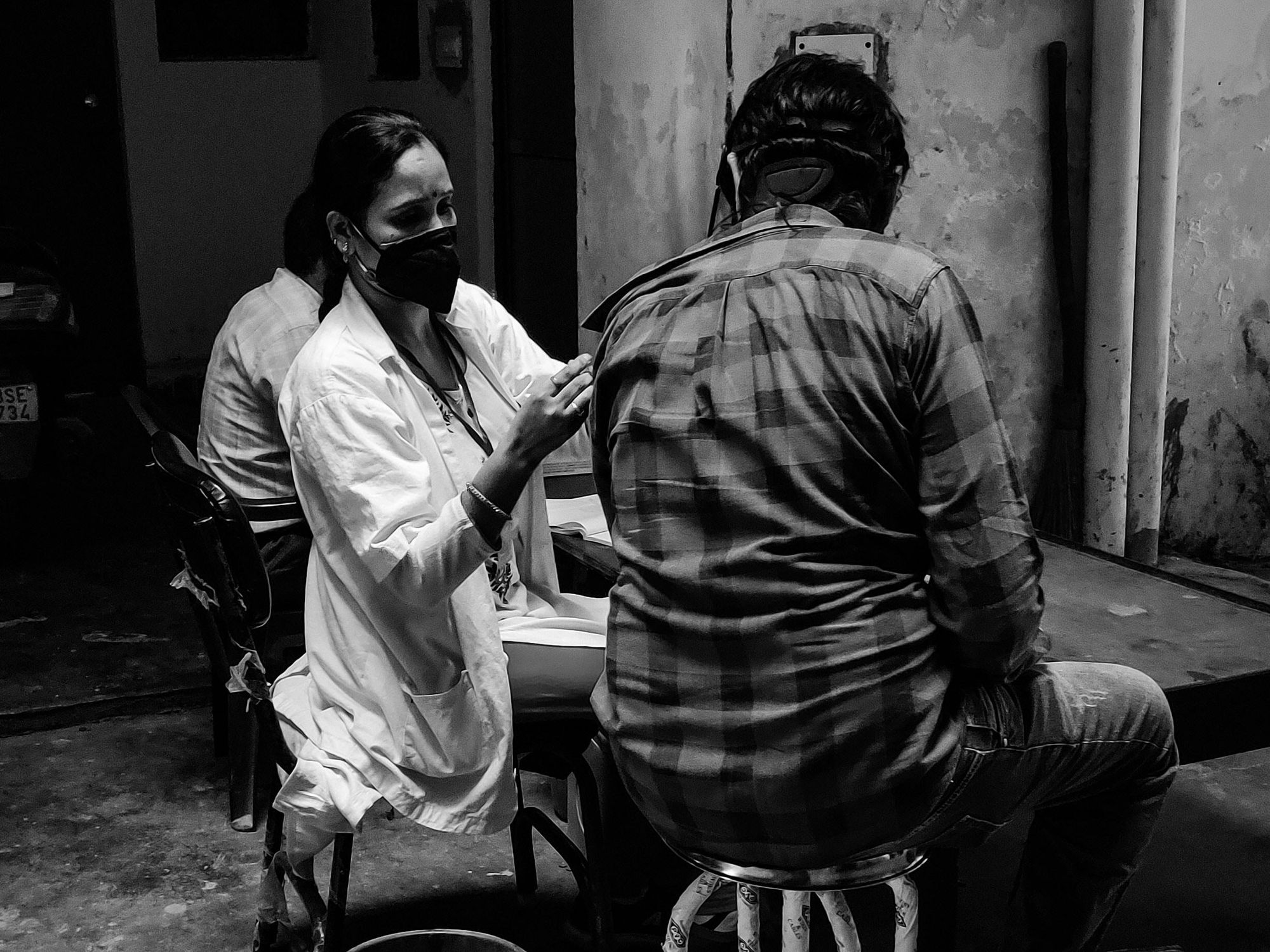
Scientists at Baylor College of Medicine developed a vaccine called Corbevax that, unlike mRNA vaccines, can be mass produced using technology already in place in low- and middle-income countries. It's now being administered in India to children aged 12-14.
When the COVID-19 pandemic began invading the world in late 2019, Peter Hotez and Maria Elena Bottazzi set out to create a low-cost vaccine that would help inoculate populations in low- and middle-income countries. The scientists, with their prior experience of developing inexpensive vaccines for the world’s poor, had anticipated that the global rollout of Covid-19 jabs would be marked with several inequities. They wanted to create a patent-free vaccine to bridge this gap, but the U.S. government did not seem impressed, forcing the researchers to turn to private philanthropies for funds.
Hotez and Bottazzi, both scientists at the Texas Children’s Hospital Center for Vaccine Development at Baylor College of Medicine, raised about $9 million in private funds. Meanwhile, the U.S. government’s contribution stood at $400,000.
“That was a very tough time early on in the pandemic, you know, trying to do the work and raise the money for it at the same time,” says Hotez, who was nominated in February for a Nobel Peace Prize with Bottazzi for their COVID-19 vaccine. He adds that at the beginning of the pandemic, governments emphasized speed, innovation and rapidly immunizing populations in North America and Europe with little consideration for poorer countries. “We knew this [vaccine] was going to be the answer to global vaccine inequality, but I just wish the policymakers had felt the same,” says Hotez.
Over the past two years, the world has witnessed 488 million COVID-19 infections and over 61 million deaths. Over 11 billion vaccine doses have been administered worldwide; however, the global rollout of COVID-19 vaccines is marked with alarming socio-economic inequities. For instance, 72 percent of the population in high-income countries has received at least one dose of the vaccine, whereas the number stands at 15 percent in low-income countries.
This inequity is worsening vulnerabilities across the world, says Lawrence Young, a virologist and co-lead of the Warwick Health Global Research Priority at the UK-based University of Warwick. “As long as the virus continues to spread and replicate, particularly in populations who are under-vaccinated, it will throw up new variants and these will remain a continual threat even to those countries with high rates of vaccination,” says Young, “Therefore, it is in all our interests to ensure that vaccines are distributed equitably across the world.”
“When your house is on fire, you don't call the patent attorney,” says Hotez. “We wanted to be the fire department.”
The vaccine developed by Hotez and Bottazzi recently received emergency use authorisation in India, which plans to manufacture 100 million doses every month. Dubbed ‘Corbevax’ by its Indian maker, Biological E Limited, the vaccine is now being administered in India to children aged 12-14. The patent-free arrangement means that other low- and middle-income countries could also produce and distribute the vaccine locally.
“When your house is on fire, you don't call the patent attorney, you call the fire department,” says Hotez, commenting on the intellectual property rights waiver. “We wanted to be the fire department.”
The Inequity
Vaccine equity simply means that all people, irrespective of their location, should have equal access to vaccines. However, data suggests that the global COVID-19 vaccine rollout has favoured those in richer countries. For instance, high-income countries like the UAE, Portugal, Chile, Singapore, Australia, Malta, Hong Kong and Canada have partially vaccinated over 85 percent of their populations. This percentage in poorer countries, meanwhile, is abysmally low – 2.1 percent in Yemen, 4.6 in South Sudan, 5 in Cameroon, 9.9 in Burkina Faso, 10 in Nigeria, 12 in Somalia, 12 in Congo, 13 in Afghanistan and 21 in Ethiopia.
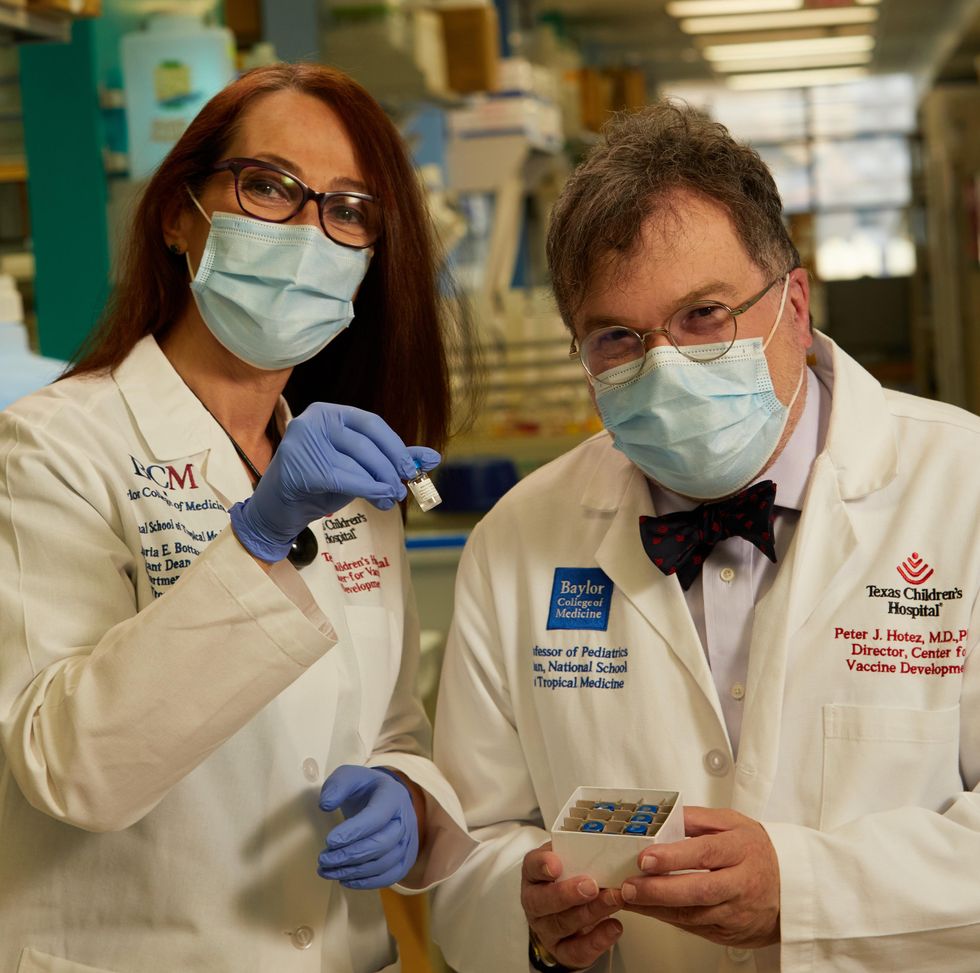
In late 2019, scientists Peter Hotez and Maria Elena Bottazzi set out to create a low-cost vaccine that would help inoculate populations in low- and middle-income countries. In February, they were nominated for a Nobel Peace Prize.
Texas Children's Hospital
The COVID-19 vaccination coverage is particularly low in African countries, and according to Shabir Madhi, a vaccinologist at the University of the Witwatersrand, Johannesburg and co-director of African Local Initiative for Vaccinology Expertise, vaccine access and inequity remains a challenge in Africa. Madhi adds that a lack of vaccine access has affected the pandemic’s trajectory on the continent, but a majority of its people have now developed immunity through natural infection. “This has come at a high cost of loss of lives,” he says.
COVID-19 vaccines mean a significant financial burden for poorer countries, which spend an average of $41 per capita annually on health, while the average cost of every COVID-19 vaccine dose ranges between $2 and $40 in addition to a distribution cost of $3.70 per person for two doses. In December last year, the World Health Organisation (WHO) set a goal of immunizing 70 percent of the population of all countries by mid-2022. This, however, means that low-income countries would have to increase their health expenditure by an average of 56.6 percent to cover the cost, as opposed to 0.8 per cent in high-income countries.
Reflecting on the factors that have driven global inequity in COVID-19 vaccine distribution, Andrea Taylor, assistant director of programs at the Duke Global Health Innovation Center, says that wealthy nations took the risk of investing heavily in the development and scaling up of COVID-19 vaccines – at a time when there was little evidence to show that vaccines would work. This reserved a place for these nations at the front of the queue when doses started rolling off production lines. Lower-income countries, meanwhile, could not afford such investments.
“Now, however, global supply is not the issue,” says Taylor. “We are making plenty of doses to meet global need. The main problem is infrastructure to get the vaccine where it is most needed in a predictable and timely way and to ensure that countries have all the support they need to store, transport, and use the vaccine once it is received.”
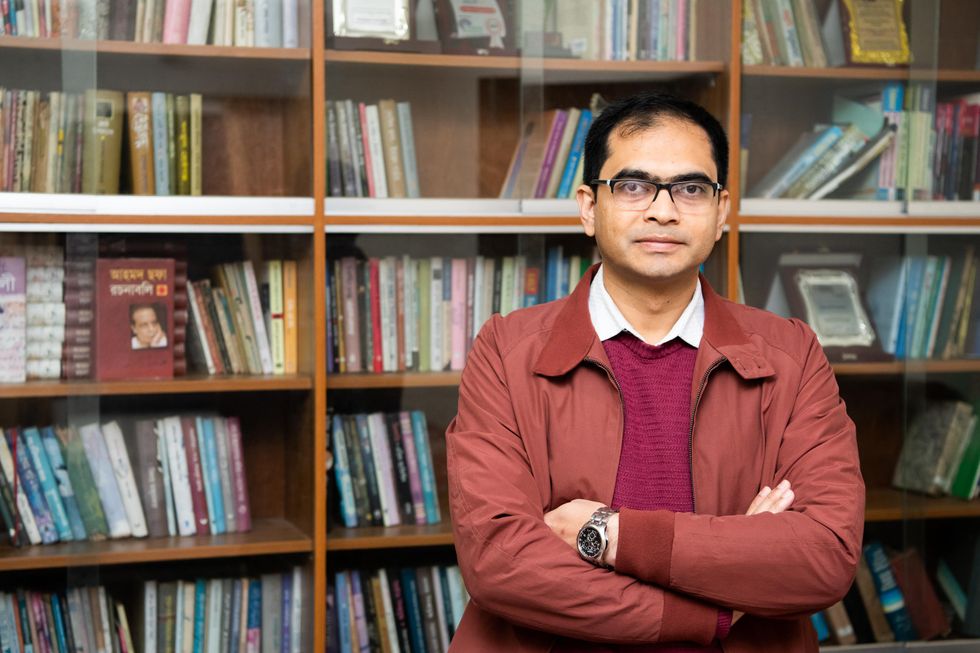
Taufique Joarder, vice-chairperson of Bangladesh's Public Health Foundation, sees the need for more trials and data before Corbevax is made available to the general population.
In addition to global inequities in vaccination coverage, there are inequities within nations. Taufique Joarder, vice-chairperson of Bangladesh’s Public Health Foundation, points to the situation in his country, where vaccination coverage in rural and economically disadvantaged communities has suffered owing to weak vaccine-promotion initiatives and the difficulty many people face in registering online for jabs.
Joarder also cites the example of the COVID-19 immunization drive for children aged 12 years and above. “[Children] are given the Pfizer vaccine, which requires an ultralow temperature for storage. This is almost impossible to administer in many parts of the country, especially the rural areas. So, a large proportion of the children are being left out of vaccination,” says Joarder, adding that Corbevax, which is cheaper and requires regular temperature refrigeration “can be an excellent alternative to Pfizer for vaccinating rural children.”
Corbevax vs. mRNA Vaccines
As opposed to most other COVID-19 vaccines, which use the new Messenger RNA (mRNA) vaccine technology, Corbevax is an “old school” vaccine, says Hotez. The vaccine is made through microbial fermentation in yeast, similar to the process used to produce the recombinant hepatitis B vaccine, which has been administered to children in several countries for decades. Hence, says Hotez, the technology to produce Corbevax at large scales is already in place in countries like Vietnam, Bangladesh, India, Indonesia, Brazil, Argentina, among many others.
“So if you want to rapidly develop and produce and empower low- and middle-income countries, this is the technology to do it,” he says.
“Global access to high-quality vaccines will require serious investment in other types of COVID-19 vaccines," says Andrea Taylor.
The COVID-19 vaccines created by Pfizer-BioNTech and Moderna marked the first time that mRNA vaccine technology was approved for use. However, scientists like Young feel that there is “a need to be pragmatic and not seduced by new technologies when older, tried and tested approaches can also be effective.” Taylor, meanwhile, says that although mRNA vaccines have dominated the COVID-19 vaccine market in the U.S., “there is no clear grounding for this preference in the data we have so far.” She adds that there is also growing evidence that the immunity from these shots may not hold up as well over time as that of vaccines using different platforms.
“The mRNA vaccines are well suited to wealthy countries with sufficient ultra-cold storage and transportation infrastructure, but these vaccines are divas and do not travel well in the rest of the world,” says Taylor. “Global access to high-quality vaccines will require serious investment in other types of COVID-19 vaccines, such as the protein subunit platform used by Novavax and Corbevax. These require only standard refrigeration, can be manufactured using existing facilities all over the world, and are easy to transport.”
Joarder adds that Corbevax is cheaper due to the developers’ waived intellectual rights. It could also be used as a booster vaccine in Bangladesh, where only five per cent of the population has currently received booster doses. “If this vaccine is proved effective for heterologous boosting, [meaning] it works well and is well tolerated as a booster with other vaccines that are available in Bangladesh, this can be useful,” says Joarder.
According to Hotez, Corbevax can play several important roles - as a standalone adult or paediatric vaccine, and as a booster for other vaccines. Studies are underway to determine Corbevax’s effectiveness in these regards, he says.
Need for More Data
Biological E conducted two clinical trials involving 3000 subjects in India, and found Corbevax to be “safe and immunogenic,” with 90 percent effectiveness in preventing symptomatic infections from the original strain of COVID-19 and over 80 percent effectiveness against the Delta variant. The vaccine is currently in use in India, and according to Hotez, it’s in the pipeline at different stages in Indonesia, Bangladesh and Botswana.
However, Corbevax is yet to receive emergency use approval from the WHO. Experts such as Joarder see the need for more trials and data before it is made available to the general population. He says that while the WHO’s emergency approval is essential for global scale-up of the vaccine, we need data to determine age-stratified efficacy of the vaccine and whether it can be used for heterologous boosting with other vaccines. “According to the most recent data, the 100 percent circulating variant in Bangladesh is Omicron. We need to know how effective is Corbevax against the Omicron variant,” says Joarder.
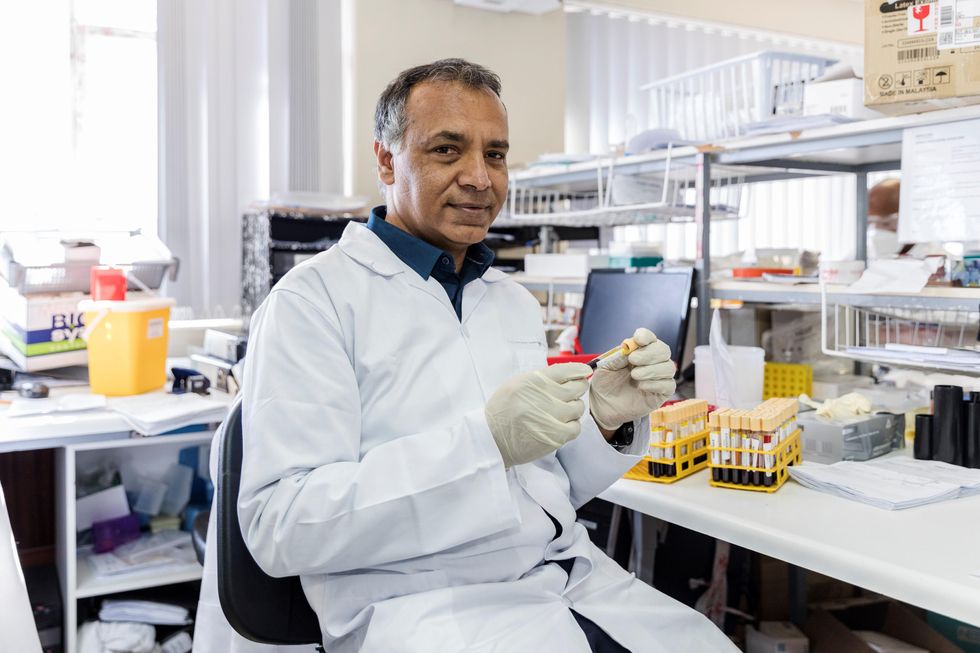
Shabir Madhi, a vaccinologist at the University of the Witwatersrand, Johannesburg and co-director of the African Local Initiative for Vaccinology Expertise, says that a majority of people in Africa have now developed immunity through natural infection. “This has come at a high cost of loss of lives."
Shivan Parusnath
Others, meanwhile, believe that availing vaccines to poorer countries is not enough to resolve the inequity. Young, the Warwick virologist, says that the global vaccination rollout has also suffered from a degree of vaccine hesitancy, echoing similar observations by President Biden and Pfizer’s CEO. The problem can be blamed on poor communication about the benefits of vaccination. “The Corbevax vaccine [helps with the issues of] patent protection, vaccine storage and distribution, but governments need to ensure that their people are clearly informed.” Notably, however, some research has found higher vaccine willingness in lower-income countries than in the U.S.
Young also emphasized the importance of establishing local vaccination stations to improve access. For some countries, meanwhile, it may be too late. Speaking about the African continent, Madhi says that Corbevax has arrived following the peak of the crisis and won’t reverse the suffering and death that has transpired because of vaccine hoarding by high-income countries.
“The same goes for all the sudden donations from countries such as France - pretty much of little to no value when the pandemic is at its tail end,” says Madhi. “This, unfortunately, is a repeat of the swine flu pandemic in 2009, when vaccines only became available to Africa after the pandemic had very much subsided.”
What Will Make the Public Trust a COVID-19 Vaccine?
A successful deployment of an eventual vaccine will mean grappling with ongoing cultural tensions.
With a brighter future hanging on the hopes of an approved COVID-19 vaccine, is it possible to win over the minds of fearful citizens who challenge the value or safety of vaccination?
Globally, nine COVID-19 vaccines so far are being tested for safety in early phase human clinical trials.
It's a decades-old practice. With a dose injected into the arm of a healthy patient, doctors aim to prevent illness with a vaccine shot designed to trigger a person's immune system to fight serious infection without getting the disease.
This week, in fact, the U.S. frontrunner vaccine candidate, developed by Moderna, safely produced an immune response in the first eight healthy volunteers, the company announced. A large efficacy trial is planned to start in July. But if positive signals for safety and efficacy result from that trial, will that be enough to convince the public to broadly embrace a new vaccine?
"Throughout the history of vaccines there has always been a small vocal minority who don't believe vaccines work or don't trust the science," says sociologist and researcher Jennifer Reich, a professor at the University of Colorado in Denver and author of Calling the Shots: Why Parents Reject Vaccines.
Research indicates that only about 2 percent of the population say vaccines aren't necessary under any circumstance. Remarkably, a quarter to one third of American parents delay or reject the shots, not because they are anti-vaccine, but because they disapprove of the recommended timing or administration, says Reich.
Additionally, addressing distrust about how they come to market is key when talking to parents, workers or anyone targeted for a new vaccine, she says.
"When I talk to parents about why they reject vaccines for their kids, a lot of them say that they don't fully trust the process by which vaccines are regulated and tested," says Reich. "They don't trust that vaccine manufacturers -- which are for-profit companies -- are looking out for public health."
Balancing Act
Globally, nine COVID-19 vaccine candidates so far are being tested for safety in early phase human clinical trials and more than 100 are under development as scientists hustle to curtail the disease. Creating a new vaccine at a record pace requires a delicate balance of benefit and risk, says vaccinology expert Dr. Kathryn Edwards, professor of pediatrics in the division of infectious diseases at Vanderbilt University School of Medicine in Nashville, Tenn.
"We take safety very seriously," says Dr. Edwards. "We don't want something bad to happen, but we also realize that we have a terrible outbreak and we have a lot of people dying. We want to figure out how we can stop this."
In the U.S., all vaccine clinical trials have a data safety board of experts who monitor results for adverse reactions and red flags that should halt a study, notes Dr. Edwards. Any candidate that succeeds through safety and efficacy trials still requires review and approval by the Food and Drug Administration before a public launch.
Community vs. Individual
A major challenge to the deployment of a safe and effective coronavirus vaccine goes beyond the technical realm. A persistent all-out anti-vaccine sentiment has found a home and growing community on social media where conspiracies thrive. Main tenets of the movement are that vaccines are ineffective, unsafe and cause autism, despite abundant scientific evidence to the contrary.
Best-case scenario, more than one successful vaccine ascends with competing methods to achieve the same goal of preventing or lessening the severity of the COVID-19 virus.
In fact, widespread use of vaccines is considered by the U.S. Centers of Disease Control and Prevention to be one of the greatest public health achievements of the 20th Century. The World Health Organization estimates that between two million to three million deaths are avoided each year through immunization campaigns that employ vaccination to control life-threatening infectious diseases.
Most people reluctant to give their children vaccines, however, don't oppose them for everyone, but believe that they are a personal choice, says Reich.
"They think that vaccines are one strategy in personal health optimization, but they shouldn't be mandated for participation in any part of civil society," she says.
Vaccine hesitancy, like the teeter totter of social distancing acceptance, reflects the push and pull of individual versus community values, says Reich.
"A lot of people are saying, 'I take personal responsibility for my own health and I don't want a city or a county or state telling me what I should and shouldn't do,'" says Reich. "Then we also see calls for collective responsibility that says 'It's not your personal choice. This is about helping health systems function. This is about making sure vulnerable people are protected.'"
These same debates are likely to continue if a vaccine comes to market, she says.
Building Public Confidence
Reich offers solutions to address the conflict between embedded American norms and widespread embrace of an approved COVID-19 vaccine. Long-term goals: Stop blaming people when they get sick, treat illness as a community responsibility, make sick leave common for all workers, and improve public health systems.
"In the shorter run," says Reich, "health authorities and companies that might bring a vaccine to market need to work very hard to explain to the public why they should trust this vaccine and why they should use it."
The rush for a viable vaccine raises questions for consumers. To build public confidence, it's up to FDA reviewers, institutions and pharmaceutical companies to explain "what steps were skipped. What steps moved forward. How rigorous was safety testing. And to make that information clear to the public," says Reich.
Dr. Edwards says clinical trial timelines accelerated to test vaccines in humans make all the safeguards involved in the process that more compelling and important.
"There's no question we need a vaccine," she says. "But we also have to make sure that we don't harm people."
The Road Ahead
Think of manufacturing and distribution as key pitstops to keep the race for a vaccine on the road to the finish line. Both elements require substantial effort and consideration.
The speed of getting a vaccine to those who need it could hinge on the type of technology used to create it. Best-case scenario, more than one successful vaccine ascends with competing methods to achieve the same goal of preventing or lessening the severity of the COVID-19 virus.
Technological platforms fall into two basic camps, those that are proven and licensed for other viruses, and experimental approaches that may hold great promise but lack regulatory approval, says Maria Elena Bottazzi, co-director of Texas Children's Center for Vaccine Development at Baylor College of Medicine in Houston.
Moderna, for instance, employs an experimental technology called messenger RNA (mRNA) that has produced the encouraging early results in human safety trials, although some researchers criticized the company for not making the data public. The mRNA vaccine instructs cells to make copies of the key COVID-19 spike protein, with the goal of then triggering production of immune cells that can recognize and attack the virus if it ever invades the body.
"We were already seeing a lot of dissent around questions of individual freedoms and community responsibilities."
Scientists always look for ways to incorporate new technologies into drug development, says Bottazzi. On the other hand, the more basic and generic the technology, theoretically, the faster production could ramp up if a vaccine proves successful through all phases of clinical trials, she says.
"I don't want to develop a vaccine in my lab, but then I don't have anybody to hand it off to because my process is not suitable" for manufacturing or scalability, says Bottazzi.
Researchers at the Baylor lab hope to repurpose a shelved vaccine developed for the genetically similar SARS virus, with a strategy to leverage what is already known instead of "starting from scratch" to develop a COVID-19 vaccine. A recombinant protein technology similar to that used for an approved Hepatitis B vaccine lets scientists focus on identifying a suitable vaccine target without the added worry of a novel platform, says Bottazzi.
The Finish Line
If and when a COVID-19 vaccine is approved is anyone's guess. Announcing a plan to hasten vaccine development via a program dubbed Operation Warp Speed, President Trump said recently one could be available "hopefully" by the end of the year or early 2021.
Scientists urge caution, noting that safe vaccines can take 10 years or more to develop. If a rushed vaccine turns out to have safety and efficacy issues, that could add ammunition to the anti-vaccine lobby.
Emergence of a successful vaccine requires an "enormous effort" with many complex systems from the lab all the way to manufacturing enough capacity to handle a pandemic, says Bottazzi.
"At the same time, you're developing it, you're really carefully assessing its safety and ability to be effective," she says, so it's important "not to get discouraged" if it takes longer than a year or more.
To gauge if a vaccine works on a broad scale, it would have to be delivered into communities where the virus is active. There are examples in history of life-saving vaccines going first to people who could pay for them and not to those who needed them most, says Reich.
"Agencies are going to have to think about how those distribution decisions are going to be made and who is going to make them and that will go a certain way toward reassuring the public," says Reich.
A Gallup survey last year found that vaccine confidence, in general, remains high, with 86 percent of Americans believing that vaccines are safer than the diseases that they are designed to prevent. Still, recent news organization polls indicate that roughly 20 to 25 percent of Americans say they won't or are unlikely to get a COVID-19 vaccine if one becomes available.
Until the 1980s, every vaccine to hit the market was appreciated; a culture of questioning science didn't exist in the same way as today, notes Reich. Time passed and attitudes changed.
"We were already having robust arguments nationally about what counts as an expert, what's the role of the government in daily life," says Reich. "We were already seeing a lot of dissent around questions of individual freedoms and community responsibilities. COVID-19 did not create those conflicts, but they've definitely become more visible since we've moved into this pandemic."
The CRISPR-Cas9 gene editing tool could be used to "turn off" pain directly, raising ethical questions for society.
Scientists have long been aware that some people live with what's known as "congenital insensitivity to pain"—the inability to register the tingles, jolts, and aches that alert most people to injury or illness.
"If you break the chain of transmission somewhere along there, it doesn't matter what the message is—the recipient will not get it."
On the ospposite end of the spectrum, others suffer from hyperalgesia, or extreme pain; for those with erythromelalgia, also known as "Man on Fire Syndrome," warm temperatures can feel like searing heat—even wearing socks and shoes can make walking unbearable.
Strangely enough, the two conditions can be traced to mutations in the same gene, SCN9A. It produces a protein that exists in spinal cells—specifically, in the dorsal root ganglion—which transmits the sensation of pain from the nerves at the peripheral site of an injury into the central nervous system and to the brain. This fact may become the key to pain relief for the roughly 20 percent of Americans who suffer from chronic pain, and countless other patients around the world.
"If you break the chain of transmission somewhere along there, it doesn't matter what the message is—the recipient will not get it," said Dr. Fyodor Urnov, director of the Innovative Genomics Institute and a professor of molecular and cell biology at the University of California, Berkeley. "For scientists and clinicians who study this, [there's] this consistent tracking of: You break this gene, you stop feeling pain; make this gene hyperactive, you feel lots of pain—that really cuts through the correlation versus causation question."
Researchers tried for years, without much success, to find a chemical that would block that protein from working and therefore mute the pain sensation. The CRISPR-Cas9 gene editing tool could completely sidestep that approach and "turn off" pain directly.
Yet as CRISPR makes such targeted therapies increasingly possible, the ethical questions surrounding gene editing have taken on a new and more urgent cast—particularly in light of the work of the disgraced Chinese scientist He Jiankui, who announced in late 2018 that he had created the world's first genetically edited babies. He used CRISPR to edit two embryos, with the goal of disabling a gene that makes people susceptible to HIV infection; but then took the unprecedented step of implanting the edited embryos for pregnancy and birth.
Edits to germline cells, like the ones He undertook, involve alterations to gametes or embryos and carry much higher risk than somatic cell edits, since changes will be passed on to any future generations. There are also concerns that imprecise edits could result in mutations and end up causing more disorders. Recent developments, particularly the "search-and replace" prime-editing technique published last fall, will help minimize those accidental edits, but the fact remains that we have little understanding of the long-term effects of these germline edits—for the future of the patients themselves, or for the broader gene pool.
"We need to have appropriate venues where we deliberate and consider the ethical, legal and social implications of gene editing as a society."
It is much harder to predict the effects, harmful or otherwise, on the larger human population as a result of interactions with the environment or other genetic variations; with somatic cell edits, on the other hand— like the ones that would be made in an individual to turn off pain—only the person receiving the treatment is affected.
Beyond the somatic/germline distinction, there is also a larger ethical question over how much genetic interference society is willing to tolerate, which may be couched as the difference between therapeutic editing—interventions in response to a demonstrated medical need—and "enhancement" editing. The Chinese scientist He was roundly criticized in the scientific community for the fact that there are already much safer and more proven methods of preventing the parent-to-child transmission of HIV through the IVF process, making his genetic edits medically unnecessary. (The edits may also have increased the girls' risk of susceptibility to other viruses, like influenza and the West Nile virus.)
Yet there are even more extreme goals that CRISPR could be used to reach, ones further removed from any sort of medical treatment. The 1997 science fiction movie Gattaca imagined a dystopian future where genetic selection for strength and intelligence is common, creating a society that explicitly and unapologetically endorses eugenics. In the real world, Russian President Vladimir Putin has commented that genetic editing could be used to create "a genius mathematician, a brilliant musician or a soldier, a man who can fight without fear, compassion, regret or pain."
"[Such uses] would be considered using gene editing for 'enhancement,'" said Dr. Zubin Master, an associate professor of biomedical ethics at the Mayo Clinic, who noted that a series of studies have strongly suggested that members of the public, in the U.S. and around the world, are much less amenable to the prospect of gene editing for these purposes than for the treatment of illness and disease.
Putin's comments were made in 2017, before news of He's experiment broke; since then no country has moved to continue experiments on germline editing (although one Russian IVF specialist, Denis Rebrikov, appears ready to do so, if given approval). Master noted that the World Health Organization has an 18-person committee currently dedicated to considering these questions. The Expert Advisory Committee on Developing Global Standards for Governance and Oversight of Human Genome Editing first convened in March 2019; that July, it issued a recommendation to regulatory and ethics authorities in all countries to refrain from approving clinical application requests for work on human germline genome editing—the kind of alterations to genetic cells used by He. The committee's report and a fleshed-out set of guidelines is expected after its final meeting, in Geneva this September (unless the COVID-19 pandemic disrupts the timeline).
Regardless of the WHO's report, in the U.S., all regulations of new medical procedures are overseen at the federal level, subjected to extensive regulatory review by the FDA; the chance of any doctor or company going rogue is minimal to none. Likewise, the challenges we face are more on the regulatory end of the spectrum than the Gattaca end. Dr. Stephanie Malia Fullerton, a bioethics professor at the University of Washington, pointed out that eugenics not only typically involves state-sponsored control of reproduction, but requires a much more clearly delineated genetic basis of common complex traits—indeed, SCN9A is one way to get to pain, but is not the only source—and suggested that current concerns about over-prescribing opioids are a more pressing question for society to address.
In fact, Navega Therapeutics, based in San Diego, hopes to find out whether the intersection of this research into SCN9A and CRISPR would be an effective way to address the U.S. opioid crisis. Currently in a preclinical funding stage, Navega's approach focuses on editing epigenetic molecules attached to the basic DNA strand—the idea is that the gene's expression can be activated or suppressed rather than removed entirely, reducing the risk of unwanted side effects from permanently altering the genetic code.
As these studies focused on the sensation of pain go forward, what we are likely to see simultaneously is the use of CRISPR to target diseases that are the root causes of that pain. Last summer, Victoria Gray, a Mississippi woman with sickle cell disease was the second-ever person to be treated with CRISPR therapy in the U.S. The disease is caused by a genetic mutation that creates malformed blood cells, which can't carry oxygen as normal and get stuck inside blood vessels, causing debilitating pain. For the study, conducted in concert with CRISPR Therapeutics, of Cambridge, Mass., cells were removed from Gray's bone marrow, modified using CRISPR, and infused back into her body, a technique called ex vivo editing.
In early February this year, researchers at the University of Pennsylvania published a study on a first-in-human phase 1 clinical trial, in which three patients with advanced cancer received an infusion of ex vivo engineered T cells in an effort to improve antitumor immunity. The modified cells persisted for up to nine months, and the patients experienced no serious adverse side effects, suggesting that this sort of therapeutic gene editing can be performed safely and could potentially allow patients to avoid the excruciating process of chemotherapy.
Then, just this spring, researchers made another advance: The first attempt at in vivo CRISPR editing—where the edits happen inside the patient's body—is currently underway, as doctors attempt to treat a patient blinded by Leber congenital amaurosis, a rare genetic disorder. In an Oregon study sponsored by Editas Medicine and Allergan, the patient, a volunteer, was injected with a harmless virus carrying CRISPR gene-editing machinery; the hope is that the tool will be able to edit out the genetic defect and restore production of a crucial protein. Based on preliminary safety reports, the study has been cleared to continue, and data on higher doses may be available by the end of 2020. Editas Medicine and CRISPR Therapeutics are joined in this sphere by Intellia Therapeutics, which is seeking approval for a trial later this year on amyloidosis, a rare liver condition.
For any such treatment targeting SCN9A to make its way to human subjects, it would first need to undergo years' worth of testing—on mice, on primates, and then on volunteer patients after an extended informed-consent process. If everything went perfectly, Urnov estimates it could take at least three to four years end to end and cost between $5 and 10 million—but that "if" is huge.
"The idea of a regular human being, genetically pure of pain?"
And as that happens, "we need to have appropriate venues where we deliberate and consider the ethical, legal and social implications of gene editing as a society," Master said. CRISPR itself is open-source, but its application is subject to the approval of governments, institutions, and societies, which will need to figure out where to draw the line between miracle treatments and playing God. Something as unpleasant and ubiquitous as pain may in fact be the most appropriate place to start.
"The pain circuit is very old," Urnov said. "We have evolved with the senses that we have, and have become the species that we are, as a result of who we are, physiologically. Yes, I take Advil—but when I get a headache! The idea of a regular human being, genetically pure of pain?... The permanent disabling or turning down of the pain sensation, for anything other than a medical reason? … That seems to be challenging Mother Nature in the wrong ways."
